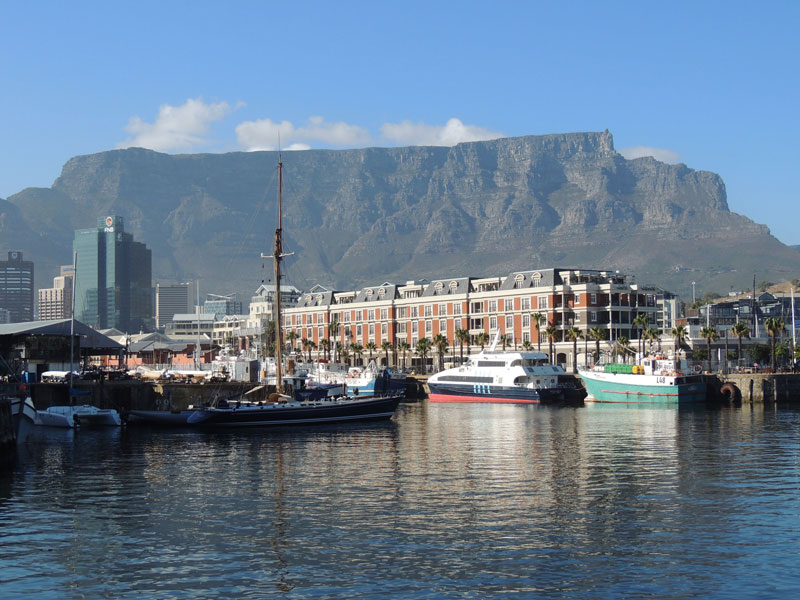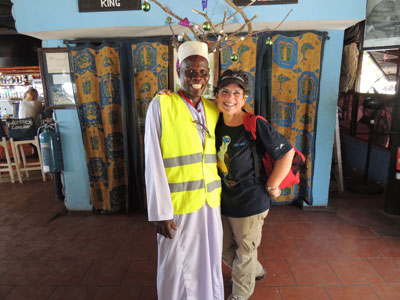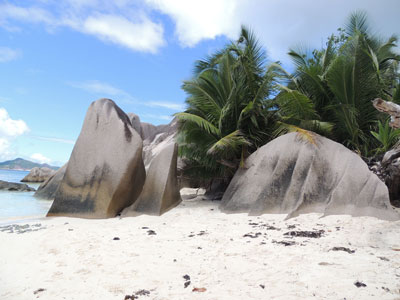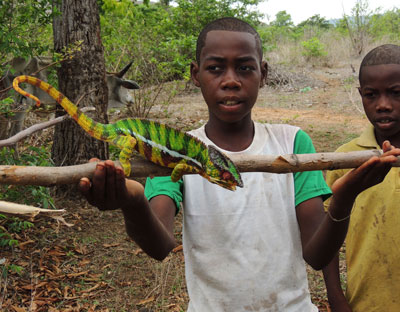Voyage of discovery – cruising the Indian Ocean
This article appears on page 34 of the July 2015 issue.
Answering an advert in the back of International Travel News for a single, senior woman to share expenses/travels/stateroom for an extended Indian Ocean trip with Voyages of Discovery (Scottsdale, AZ; 866/623-2689, www.voyagesofdiscovery.com), beginning in Colombo, Sri Lanka, in late November 2014, I made the split-second decision to take the leap, sight unseen.
The trip included a pre-cruise tour of Sri Lanka ($1,399) and three back-to-back cruises: “Treasures of the Indian Ocean” ($3,068), “East Africa and Indian Ocean Gems” ($3,299) and “Splendors of the Indian Ocean” ($3,821). Optional excursions on each cruise totaled $759, $755 and $1,079, respectively.
Traveling to the other side of the world takes endurance, patience, fortitude and courage. Preparing to put one’s life “on hold” for a multiple-week trip takes incredible organization and work.
With lists pasted all over my house, I still began the adventure with only half the pills I needed, my only sweater lost in the Istanbul airport, and two brand-new iPhones shattered. By the time I reached Colombo, Sri Lanka, I was a wreck.
Introduction to Colombo
My entire first day was spent with the Cinnamon Lakeside hotel’s taxi driver, wending our way through colorful, crowded Colombo to access doctors, hospitals and pharmacies in order to replace my missing medication. Buoyed by all the gaudy, rainbow-colored Christmas decorations in the hotel, I was ready to meet the group of 40 travelers taking the pre-cruise Sri Lanka trip.
For four days on land, our senses were assailed with a thousand shades of green — towering coconut palms, deep lush jungle, innumerable tea bushes and the tender shoots of new rice.
Filled with ancient cities, holy sites and serene statues of Buddha, Sri Lanka is also known for its precious stones, seas filled with a variety of fish, pristine white beaches, cool highlands and a lingering trace of the British Raj.
Daily we were challenged, through the heat, humidity and, at times, heavy rains (which washed out roads). We went through it all as we climbed to the top of Sigiriya, a UNESCO World Heritage Site. Slipping and sliding on the narrow, ancient steps, falling, huffing and puffing our way to the top of the rock as the sun disappeared, we bonded as a group, ready to begin our amazing trip on the British ship Voyager.
The adventure begins
Our home for the next few weeks, Voyager was a relatively small ship. Among the 400 passengers, our group of 40 created a microcommunity, and we were always happy to see each other… at open-seating dining, at the nightly entertainment, during lectures with world-renowned speakers, playing together at daily trivia games, while quietly reading together in spots around the ship, walking the “track” at 6 a.m., taking Zumba classes, playing Scrabble or shuffleboard or sunbathing on the top deck. We were a cohesive band of travelers.
One of the most frustrating features about cruising is having to choose which excursions to take. Always fearful that my choice would not be the best, I’d hold my breath, hoping that, at the end of the day, news of adventures taken by others didn’t top my experience.
During the first leg of the cruise, one of my choices was the elephants of Pinnawala. As an inexperienced cruiser, I thought, “Just go with your pre-trip choices; whatever you experience will be wonderful!” It was a success.
Sailing to Hambantota, Sri Lanka, we jumped into our first safari jeeps at Bundala National Park. For bird-watchers, this was a paradise — green bee-eaters, Caspian terns, paddyfield pipits, yellow-wattled lapwings, crested treeswifts and many more.
Next we sailed into the Maldives, one of the most unique destinations in the world. Consisting of a series of 1,190 coral islands grouped in a double chain of 26 atolls, it stretches over a distance of about 800 kilometers, north to south. Leaping dolphins and flying fish greeted us.
Stopping at Male, with its people so polite and friendly and life slowed down to a peaceful pace, we found pristine white-sand beaches, turquoise waters and myriad colorful fish and birds, giving us a glimpse of what we were going to experience on this trip.
Preparations and presentations
At ports not large enough to accommodate the ship, we tendered to our destination. Often, high waves created breathtaking moments as we entered or exited the miniature boat.
Due to our proximity to Somalia, we were on high pirate watch. We had to engage in “pirate drills” to practice where we would hide, etc. A code word signaled passengers to go to their pirate stations.
Every night, all cabin drapes had to be closed so no lights would be visible. Two private commando types were quietly added to the ship, watching, waiting and protecting. Their guns were formidable.
Barbed wire was added all around the back of the ship. We were ready. Astonishingly, “Captain Phillips” was playing on the TVs in our cabins!
During full days at sea, experts in areas pertinent to the locations we visited were scheduled. Famous British authors, knights, photographers, etc., were featured.
Photography classes and jewelry making became the activities I most enjoyed. I completed the cruise with more than a dozen beaded necklaces of semiprecious stones.
Paradise found
The Seychelles archipelago was next in line. Low-lying and covered in dense vegetation, Seychelles consists of more than a hundred islands boasting an abundance of rare birds, plants, giant tortoises, turtles and spectacular tropical fish.
At the island of La Digue, Seychelles, we found our paradise — pure white sands, gigantic rounded rock formations, turquoise waters, no vehicles (except for bicycles), colorful fish swimming around our legs and friendly people. They had to tear us away to go back to the ship.
We headed on to Port Louis, Mauritius, one of the most densely populated places in the world.
While walking with other ladies on our own through Chinatown and central Port Louis, my third iPhone 6 (the first two having been broken) was stolen from the lowest zippered compartment on my backpack. I never felt anything.
All my photos, contacts, calendar, gone. Due to the lack of wireless on the ship, I had no backup way to stay in touch… and no books.
Lesson learned — never wear a backpack on your back in a crowded city, and never put your iPhone in the easiest-to-reach compartment.
The sugarcane island of the Indian Ocean, Mauritius also boasts tropical white-sand beaches, breezy bays and glorious seascapes.
Our stay included visits to rum factories, miniature-ship builders, a dormant volcano and multicolored sand dunes plus a boat excursion to an island for a day of snorkeling, sightseeing from a glass-bottomed boat, a barbecue and unlimited rum drinks — another piece of paradise in the Indian Ocean.
Beauty and the beast
I was excited to be sailing over to Réunion Island, a French overseas department, with its savagely beautiful, still-seething volcanic landscape. The fragrance of the tamarind trees, emerald-green lagoons, mighty mountains and resplendent waterfalls all create a tropical island of incomparable beauty.
Occasionally, the “Furnace” pours forth a river of lava, creating a sense of impermanence for its inhabitants.
Our group drove around the spider’s web of roads curling in from all sides, touring vanilla plantations and diving into a Creole luncheon with powerful local rums. Everyone was happy.
Lying 250 miles off the southeast coast of Africa, the perfumed island of Madagascar awaited our arrival. Because of its geographical location, the island is home to thousands of unique plants and exceptional fauna, including more than 50 kinds of lemurs. I could sit for hours staring at the antics of these small primates!
As we meandered through the one-of-a-kind baobab forest, we spotted our first ring-tailed lemurs. Six of us went running, snapping photos as we approached. Not expecting to see lemurs that day, we were thrilled!
Lemurs have long arms, long fingers… and long nails. All of a sudden a furry arm shot out and scratched my fingers, drawing blood.
Obsessing about the possible side effects of lemur bacteria, I rushed to the ship’s doctor when back on board. When he replied, “What’s a lemur?” I decided to ask Google if I was going to live — not a good idea. The doom and gloom of articles on Wikipedia about lemur scratches and bites had me writing my Last Will and Testament that night.
Two weeks later, the wounded part of my finger turned black. After returning home to Napa, I completed a series of rabies shots as a precaution as well as immunoglobulin. So much for the adorable lemurs of Madagascar.
Zanzibar and beyond
In 1964, Tanganyika and the offshore coral-reefed island of Zanzibar, our next port of call, were united into Tanzania. Meandering through the narrow, twisty streets of the Stone Town center of Zanzibar, the heady fragrance of spice groves in the air, we gazed out at the sight of the dhows’ triangular sails billowing in the wind, passing smiling, colorfully attired women and children in burkas and hijabs, memories of “Road to Zanzibar” with Bob Hope and Bing Crosby dancing in my head.
Zanzibar was everything I had imagined, with the sea breezes tempering the sizzling heat. Not having a good sense of direction, I hired a day guide to lead me through the well-traveled alleyways, bustling shops, peaceful mosques and bazaars.
Noticing that I was curious, a kind gentleman invited me to enter the mosque, where a solemn wedding ceremony was unfolding. I noticed that there were no women present, and he explained that they were all in a different location and would be joining the groom later that day. I felt honored that this lovely stranger reached out to me.
Our final sailing destination was South Africa, filled with a mosaic of ethnic groups and landscapes, cultures and traditions, wild beasts and rare plants.
With stops at Richards Bay, Durban, Port Elizabeth and, finally, Cape Town, our days were filled with many safaris. We saw, up close and personal, almost all of the Big Five: the African lion, elephant, rhinoceros and Cape buffalo — no leopards for us. Jumping into the safari vehicles each day, my heart thumping, I never noticed the heat or dust.
Sad that the adventure was winding down, we laid final anchor in Cape Town, the jewel of South Africa. Sights, including Cape Point, inviting white-sand beaches, multihued turquoise waters, slow-moving jackass penguins (so called for their hilarious braying call) and the lush Kirstenbosch National Botanical Gardens, left our group clamoring for more.
Travel is addictive. There is always another experience right around the corner!




